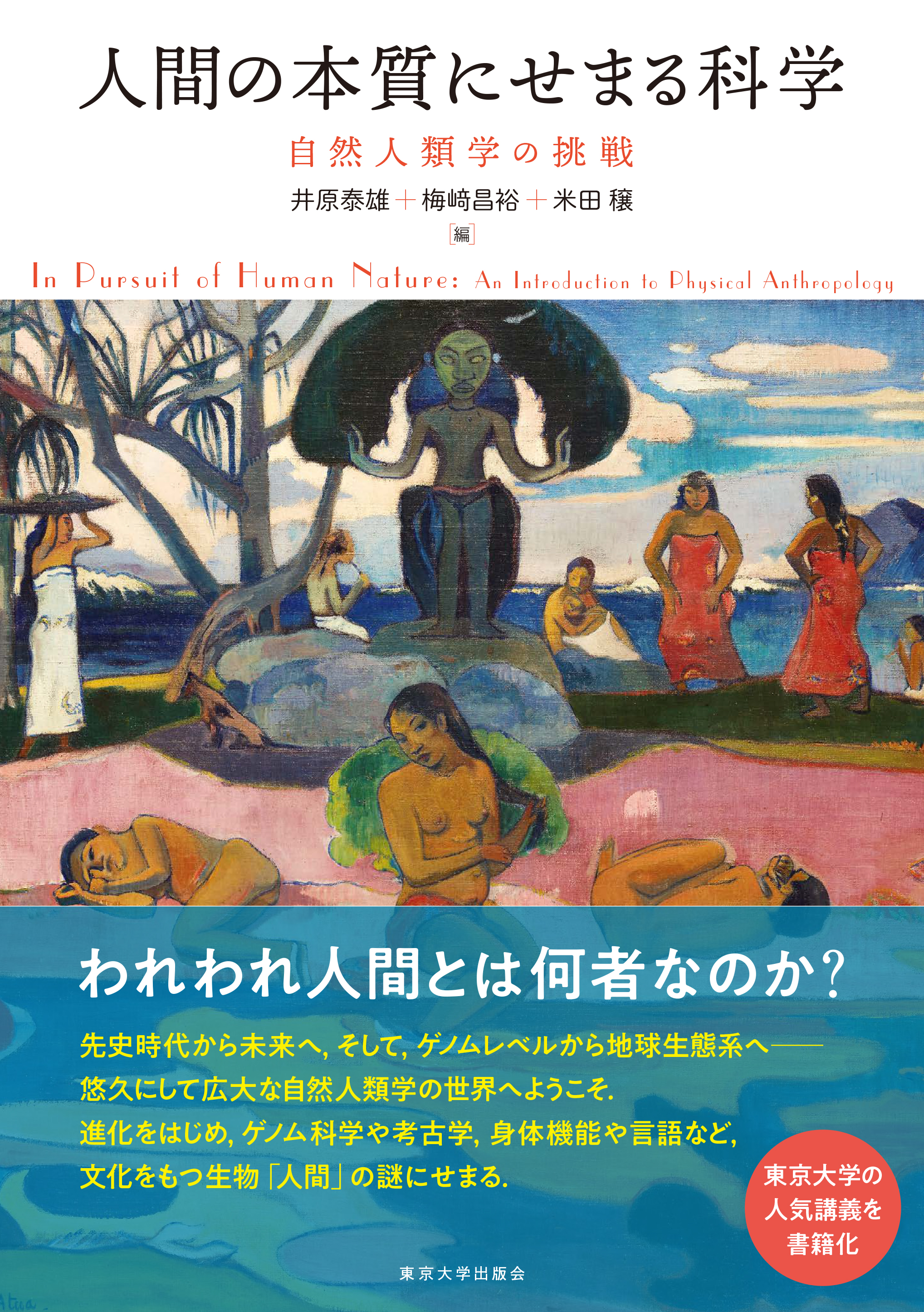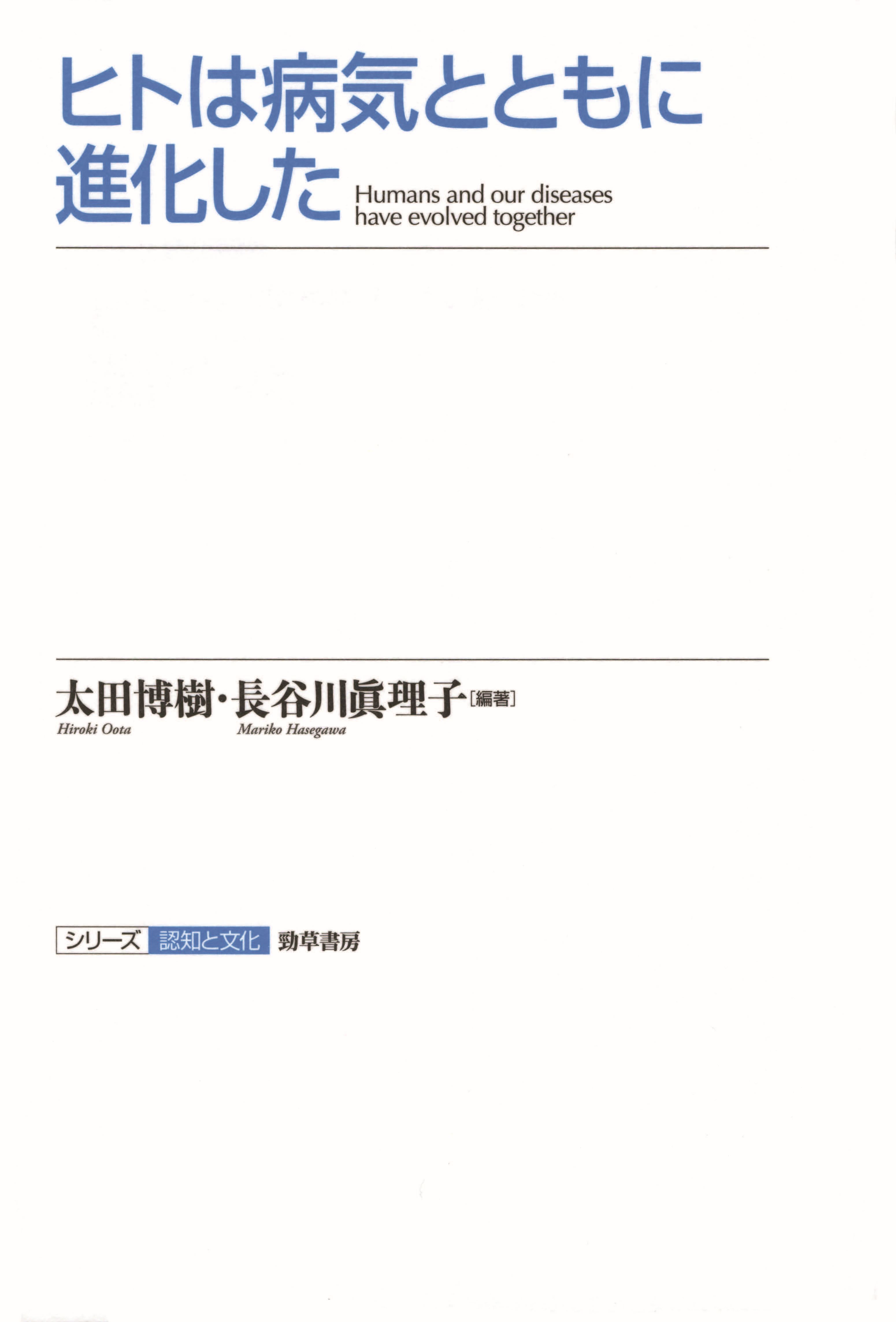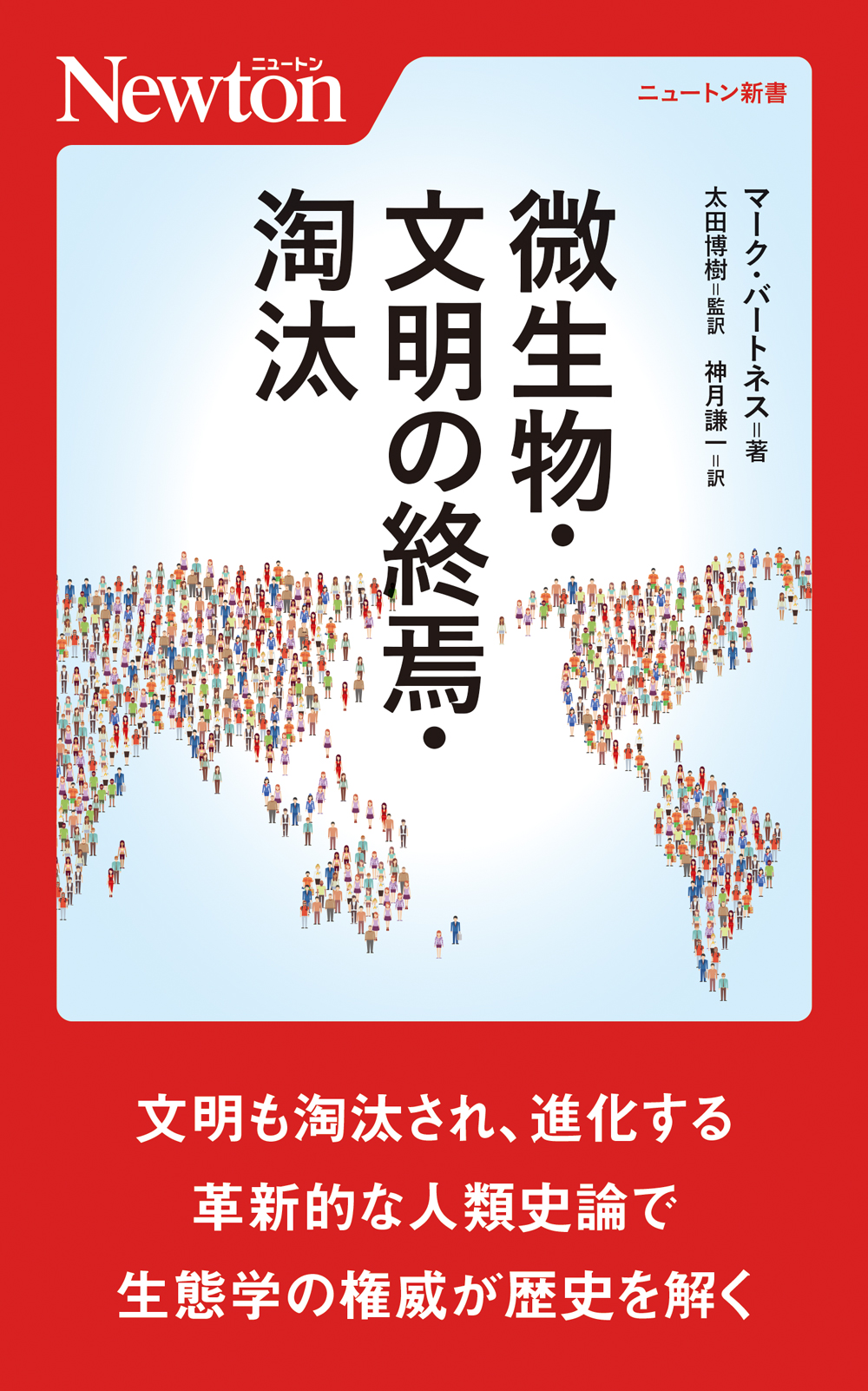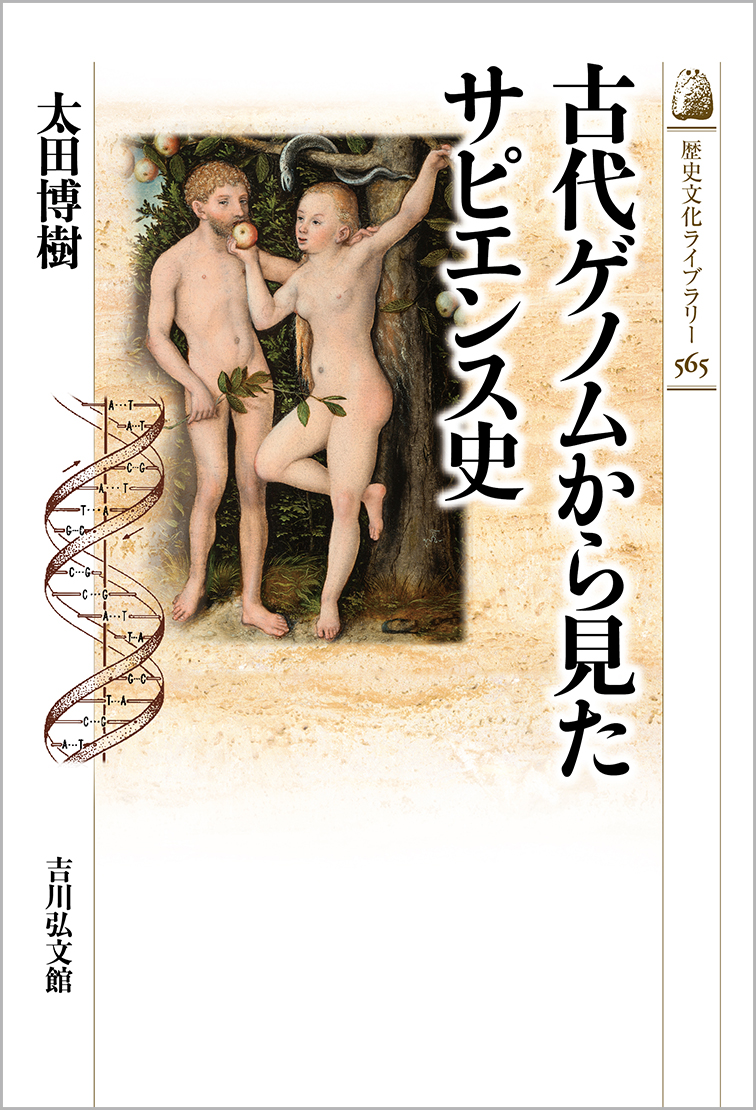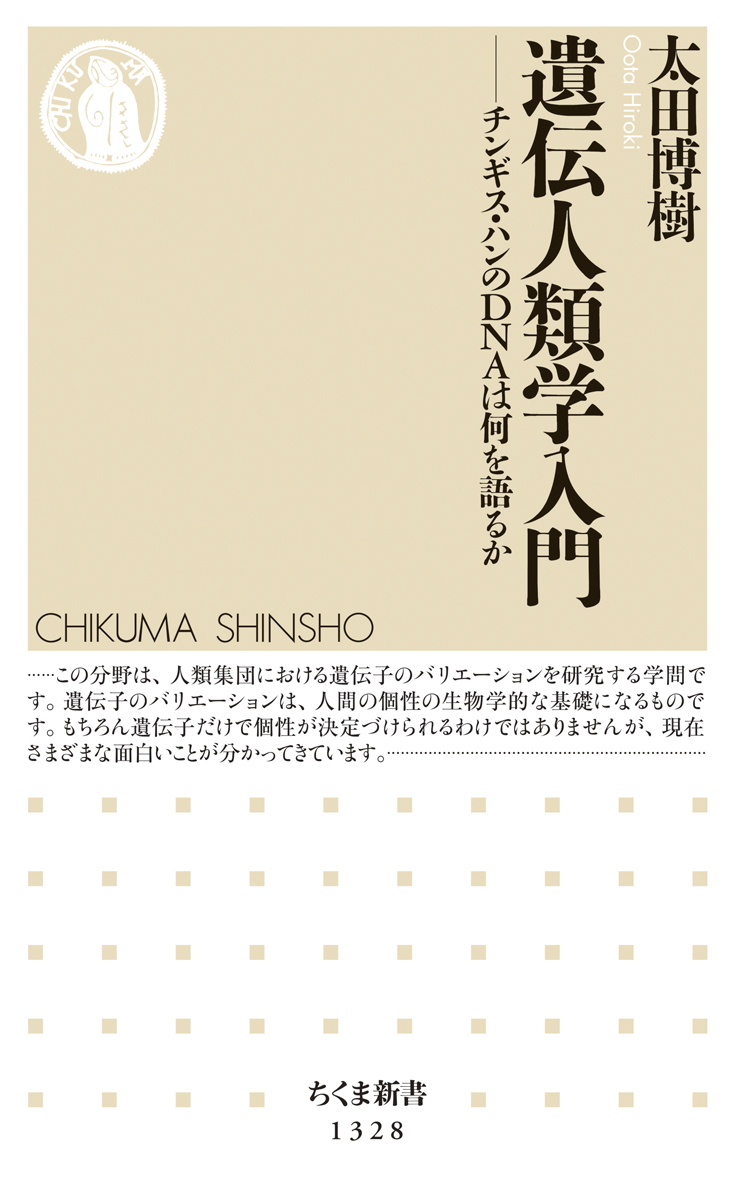
Title
CHIKUMA SHINSHO Idenjinruigaku Nyumon (An Introduction to Genetic Anthropology - What does Genghis Khan’s DNA tell us?)
Size
320 pages, paperback pocket edition
Language
Japanese
Released
May 08, 2018
ISBN
978-4-480-07138-5
Published by
Chikumashobo
Book Info
See Book Availability at Library
Japanese Page
Extensive studies in recent years on genes of people worldwide have led to identification of their variations. Many such studies have proposed the process by which Homo sapiens spread throughout the globe. Particularly, it has been hypothesized that “the Y chromosome of Genghis Khan spread explosively over a vast area of the Eurasian continent;” but what led to such a hypothesis?
This book begins with an explanation of very basic genetic terms, such as “genome,” “genes,” and “DNA.” Then, through the introduction of two hypotheses on the origin of Homo sapiens, “the Out of Africa theory” and “the multiregional evolution,” the book clearly explains how we can draw conclusions that support “the recent African origin of modern humans” from mitochondrial DNA and whether they are supported by genome information.
In modern evolutionary studies, the neutral theory is “common knowledge,” especially at the molecular level, and researchers are making an effort to find genomic traces of natural selection, which was proposed by Charles Darwin. In modern biology, evolution refers to “the process by which gene frequency fluctuates across generations.” The factors for gene frequency fluctuations are thought to be (1) mutation, (2) natural selection, (3) genetic drift, and (4) migration, of which genetic drift has been shown to have the greatest effect based on molecular data. For Homo sapiens, migration was shown to be the second largest factor after genetic drift.
A phylogenetic tree created based on the analysis of mitochondrial DNA mutations in people worldwide revealed that Homo sapiens, born on the African continent 100,000 to 200,000 years ago, spread out of the African continent 60,000 to 70,000 years ago. Human migration can be traced based on mitochondrial DNA, which is transmitted from the mother to the child, reflecting the female lineage; the male lineage can be traced using the Y chromosome. Did men and women of the human species spread by repeatedly migrating hand-in-hand? Additionally, what data indicate that “the Y chromosome of Genghis Khan spread explosively over a vast area of the Eurasian continent”?
Focusing on the fact that frequencies of mitochondrial DNA genes and the Y chromosome are influenced by the marriage system (culture) of the human population, this book discusses how it can be demonstrated by population genetics and explains the methods of creating phylogenetic trees and estimating divergence time, describing the research methods for revealing the history of Homo sapiens based on “genome,” “genes,” and “DNA.”
(Written by OOTA Hiroki, Professor, Graduate School of Science / 2021)



 Find a book
Find a book



